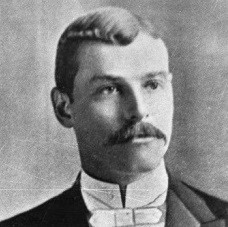
d: 1895
Harry T. Hayward
Summary
Name:
Nickname:
Minneapolis SvengaliYears Active:
1880 - 1894Status:
ExecutedClass:
Serial KillerVictims:
1-4Method:
Shooting / Bludgeoning / Blunt force traumaDeath:
December 11, 1895Nationality:
USA
d: 1895
Harry T. Hayward
Summary: Serial Killer
Name:
Harry T. HaywardNickname:
Minneapolis SvengaliStatus:
ExecutedVictims:
1-4Method:
Shooting / Bludgeoning / Blunt force traumaNationality:
USADeath:
December 11, 1895Years Active:
1880 - 1894Date Convicted:
March 8, 1895bio
Harry T. Hayward was born around 1865 in Macoupin County, Illinois, to William and Lodusky Hayward. His family moved to Minneapolis, Minnesota, during his infancy, and briefly returned to Illinois for about a year when he was six before settling permanently back in Minneapolis. As a child, Hayward attended both private and public schools, but classmates recalled him as a bully who exhibited early signs of cruelty, including torture of animals.
After high school, he worked as a clerk but by age 20 was deeply addicted to gambling, an obsession that fueled the majority of his criminal pursuits. He openly embraced atheism from a young age, reading literature to justify his manipulative and self-serving behavior. Despite briefly entertaining religious instruction while awaiting execution, he maintained his atheistic views until the end.
Described as charismatic and cunning, Hayward operated within upper-class social circles while secretly committing a string of illegal acts, including fraud, arson, and eventually, murder. His confidence and ability to manipulate others earned him the title “Minneapolis Svengali” in the press.
murder story
In January 1894, he met 30-year-old Katherine “Kitty” Ging, a dressmaker who rented a unit from his parents at the Ozark Flats apartment building on Hennepin Avenue in Minneapolis. Described as assertive and independent, Ging soon became entangled in a manipulative scheme after Hayward convinced her to lend him large sums of money—money he funneled into his spiraling gambling habit. When she demanded repayment, Hayward repaid her with counterfeit bills and dismissed her behind closed doors as "an easy mark."
As her persistence grew, so did his contempt. Hayward's frustration spilled into conversations with Claus Blixt, the janitor at Ozark Flats, where he expressed violent fantasies about murdering Ging. He raged that if he had to choose between killing a dog and her, he’d “let the dog go.”
Behind the scenes, Hayward persuaded Ging to take out a $10,000 life insurance policy—naming him the sole beneficiary. This planted the seed for what would become one of the most shocking murder-for-hire plots of the Gilded Age. On 3 December 1894, Ging’s body was discovered by a rural road near Lake Calhoun (now Bde Maka Ska). She had been shot behind the ear—execution-style.
In a textbook narcissistic move, Hayward inserted himself into the investigation, painting himself as a concerned acquaintance. He even floated the theory that someone may have killed Ging over a debt—conveniently omitting that he was the one indebted to her.
But Hayward’s web of lies began to collapse when his own brother, Adry Hayward, confessed to a friend that Harry had approached him months earlier with a plot to kill Ging. That friend, Levi Stewart, alerted authorities. With mounting pressure, Claus Blixt confessed that he had committed the murder—but only at Hayward’s instruction and under threat.
Hayward and Blixt were both arrested in December 1894. The trial opened on January 21, 1895, presided over by Judge Seagrave Smith. The prosecution, led by County Attorney Frank Nye, called 136 witnesses over 46 days. Two crucial testimonies—Blixt, who pulled the trigger, and Adry, who exposed the plot—left the jury little doubt.
The defense tried to discredit Adry, labeling him unstable, and portrayed Hayward as innocent. Even Harry took the stand in his own defense, denying every allegation. But on 8 March 1895, the jury found him guilty of first-degree murder. Three days later, he was sentenced to death by hanging.
While awaiting execution, Hayward gave a series of confessional interviews to his cousin Edward H. Goodsell, recorded by a court stenographer. In these chilling sessions, Hayward admitted to a slew of crimes: gambling fraud, arson, and three other murders across three states.
One victim was a 20-year-old woman he met in Pasadena, California. After luring her on a buggy ride into the Sierra Madre, he shot her in the back of the head and buried her in a shallow grave, taking off with $7,000 in cash she had on her. Another victim was a sickly man he encountered on a train near Long Branch, New Jersey. Hayward robbed him of $2,000, then threw his body into the Shrewsbury River. The most brutal confession came from New York City: in a gambling den on Mulberry Street, Hayward described a violent altercation with a Chinese man whom he beat, kicked, and finally impaled in the eye with a chair leg before finishing him off.
These confessions painted a picture of a narcissistic, remorseless killer—traits modern psychology would now associate with psychopathy. He expressed no regret, laughing as he described the sounds of bones cracking under the pressure of the chair.
On 11 December 1895, Harry Hayward was hanged at Hennepin County Jail. His final hours were spent putting on a performance, greeting the crowd with jokes and dramatic flair. He mocked the solemnity of death, said he didn’t need religion, and requested cheers from the spectators. After a long speech and a sarcastic apology to God, he stepped onto the gallows. His last words: “Pull her tight; I’ll stand pat.”
But the rope had been mismeasured. Instead of a quick drop, Hayward strangled slowly, dying thirteen minutes later at 2:25 AM. His body was buried at Minneapolis Pioneers and Soldiers Memorial Cemetery